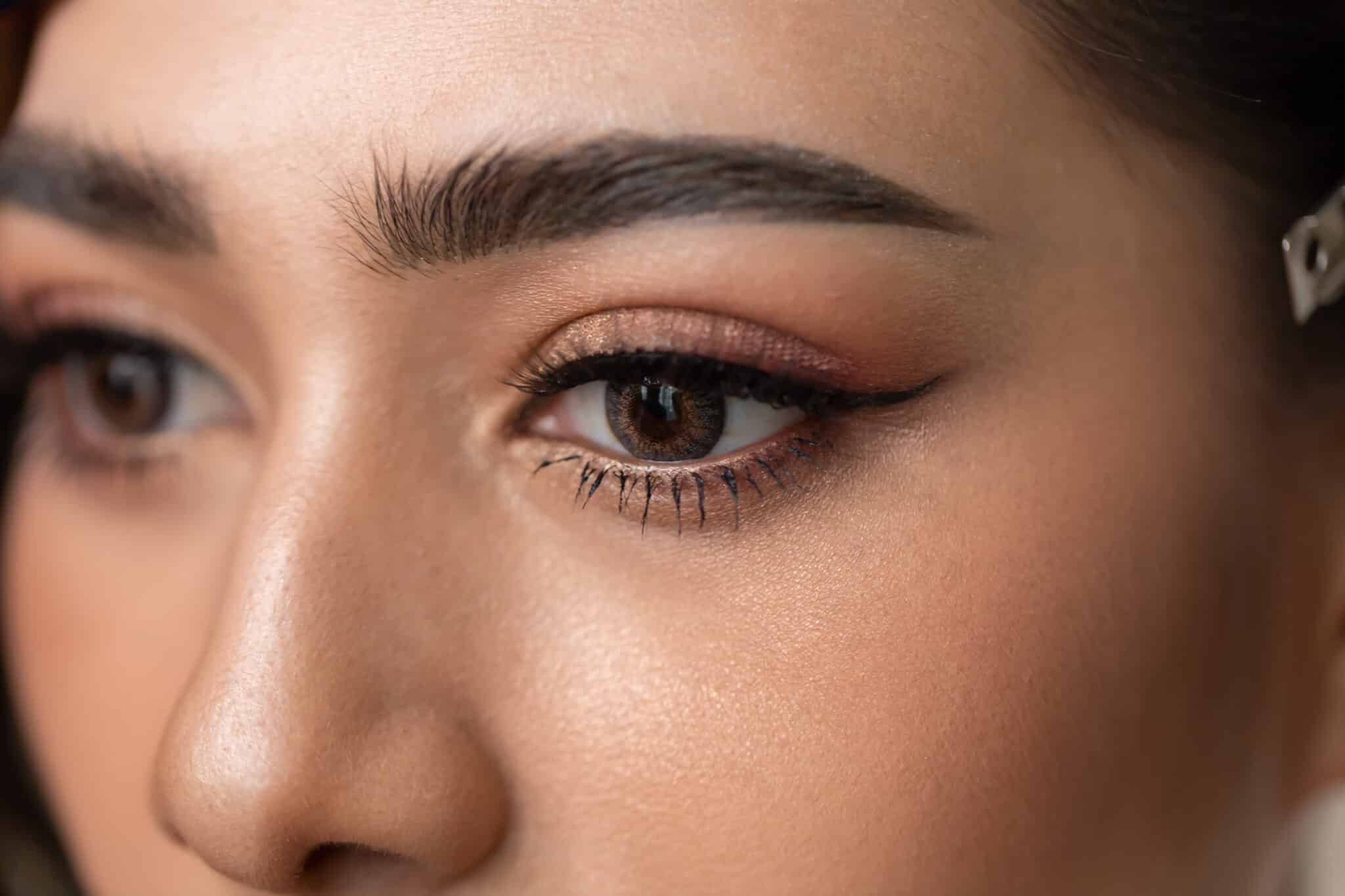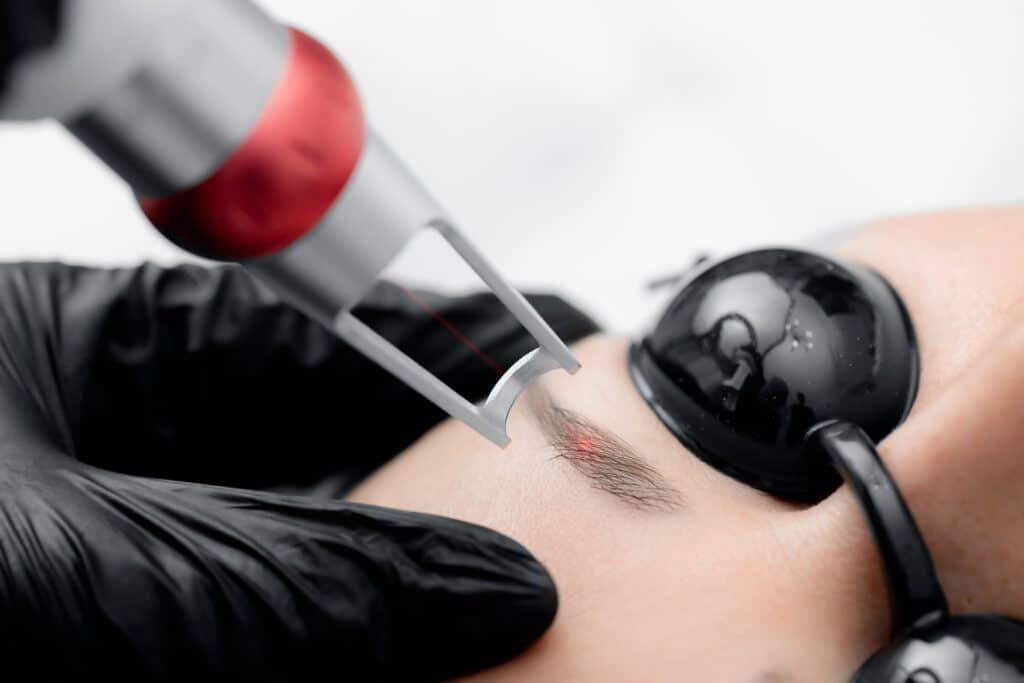
It is always ideal to have well-groomed brows, but it is not always easy to maintain them. If you desire a hassle-free and lasting solution, you might turn to or have turned to eyebrow embroidery. It is semi-permanent and an increasingly popular aesthetic procedure. However, its very lasting nature could pose problems that require an eyebrow embroidery removal procedure.
You may have seen in the news stories of eyebrow embroidery done badly, like a woman who ended up with four eyebrows. Eyebrow embroidery is not a terribly risky procedure but if it’s done by an inexperienced professional, it can lead to undesirable results.
There can also be complications with pigmentation and these are best resolved by an expert who understands skin tones. People with sensitive skin may also experience irritation and redness during the procedure that tends to persist for several days or even weeks. Even without such complications, though, there are other reasons for people to regret an eyebrow embroidery procedure.
The shape and colour of your eyebrow embroidery may have become dated or no longer match the rest of your look. In addition, you may find that your eyebrow embroidery is not lasting as long as you had hoped, with the initial shade discolouring prematurely and you may have no choice but to find solutions to reverse the procedure.
Whatever your reason, it is best to know your options and thoroughly research what eyebrow embroidery is all about, from the lasers used to the expected results. At 1Aesthetics, we usually recommend a combination approach during our laser treatment, which you will also learn about through this article.

Eyebrow embroidery is a semi-permanent form of cosmetic tattooing that enhances the appearance of eyebrows. This procedure uses a technique known as microblading, in which a blade-shaped tool with rows of tiny needles is used to implant pigment into the skin, creating hair-like strokes resulting in natural-looking brows.
This technique is becoming increasingly popular due to its ability to create fuller eyebrows without the need for daily makeup application for up to 12 months.
Because of its popularity, however, there is an increased risk of people getting the procedure done badly by untrained professionals. And that’s when people look for removal treatments.

Laser removal of eyebrow embroidery is generally safe and effective, with a low risk of infection. The treatment can also be done quickly.
Before the procedure, a numbing cream will be applied on your face and 30 minutes is necessary for it to take effect. The removal procedure itself takes between 15 to 30 minutes, depending on how comfortable you are, your level of pain tolerance and whether you have any anxiety.
Besides completely removing your eyebrow embroidery, a laser removal procedure can also be used to customise the shape and size of your eyebrow tattoo. It can also be used to lighten the colour of your existing eyebrow tattoo, allowing for a more natural look that blends better with your skin tone.
There are also non-laser eyebrow tattoo removal treatments available in Singapore, such as eyebrow embroidery correction, where someone uses new pigmentation to alter the colour or look of your eyebrow.
Another option is chemical brow removal where a chemical solution is applied to remove or lighten pigmentation. You should note, however, that chemical brow removal is not offered by clinics and it is not considered safe by most medical professionals.
At 1Aesthetics, we use laser removal treatment for eyebrow embroidery because it allows for greater control in correcting the shape of an eyebrow. Compared to non-laser treatments, it is also safer, reduces the risk of scarring and provides more thorough removal.
With our combination approach, which we share about below, we find that results are generally satisfactory and lasting.
Whatever option you choose, though, make sure you talk to whoever is doing the procedure to get a sense of just what to expect before and after the treatment. You will want to ensure that your recovery is smooth.
A q-switched laser is used to treat a variety of skin conditions. It targets and breaks up pigmented lesions, such as sun spots and age spots, as well as provides a more even skin tone and texture. It can also work on the tattoo ink that is microbladed into the eyebrow during the embroidery process.
A q-switched laser is a non-invasive, quick, and safe treatment option with minimal downtime, making it a great choice for those seeking an effective and comfortable solution.
There are two varieties of q-switched lasers: picosecond and nanosecond. The picosecond laser is usually seen as a successor to and an improvement on the nanosecond laser.
A picosecond laser has more than five times the power of a nanosecond laser and is 10 times faster than it. As a result, a picosecond laser can reduce the number of treatments necessary for tattoo removal and has become the standard for tattoo removal.
This laser works by ablating a small fraction of the skin, vaporising the tiny channels within it. The laser penetrates deeply in a focused manner. A fractional CO2 laser can be used in tandem with a q-switched laser for better effect.
In a 2015 study, it was found that more patients reported an improvement in outcome when they were treated with a combination of CO2 and q-switched lasers than when they were not.
A q-switched laser generates a lot of power and its penetration can be improved with a fractional CO2 laser. This combined effect can make tattoo removal more effective, particularly in treating faint remnant tattoos that are difficult to clear with traditional nanosecond laser treatment.
The two lasers also work well together in minimising scars. Unlike most tattoos, eyebrow embroidery is done on the skin with hair on it. Hence, it is important to minimise damage to hair follicles, which can lead to scarring.
A q-switched laser, while powerful and effective, can cause gas and steam to be trapped in the skin, increasing the chances of scarring. A fractional CO2 laser, however, can relieve these pressure points by drilling microchannels in the skin.
While eyebrow tattoo removal is not a complicated treatment, you should consider taking a few steps to make your laser removal treatment smooth.
For starters, make sure your skin is not tanned or sunburnt in any way. If possible, make sure that you take extra precautions to protect yourself from the sun several weeks before you begin treatment.
Be sure to also wear sunscreen before you leave your home. Also, make sure you are sufficiently hydrated before you go into the treatment session. If you are a smoker, try to stop smoking before treatment to quicken healing.
The tattoo removal process is quick with minimal discomfort. Full recovery should not be an issue if you follow aftercare advice.
For the first few days, ensure your eyebrow area is covered with antibiotic ointment to prevent unwanted infections that can cause scarring during recovery. The bandage can be removed after a few days, but the area should be kept dry and clean.
This does not mean that you cannot shower. However, high-pressure water should be avoided around the area. Patients should also use the antiseptic wash prescribed by their doctor.
Patients should also make sure they avoid sun exposure. After laser tattoo removal treatments, patients need to keep the treated area out of the sun. If you get a sunburn in between treatments, the next session will have to be postponed until your skin returns to its normal hue. This delay in treatment will drag out the tattoo removal process, making it harder to see results in the near term.
Patients should also make sure that they do not pick at scabs or break any blisters. Blistering and scabbing are natural side effects of the healing process, and you might be tempted to pick them.
Doing so, however, would be reopening a wound that is already healing. This not only increases the risk of infection but also prolongs the healing process.
While claims of cheap and affordable eyebrow embroidery removal services are widespread, these might cause more damage in the long run.
Tattoo removal is widely available, but the sensitivity of the treatment area, as well as the need for skill and expertise in deploying the laser in question, mean that patients should strongly consider a practitioner's experience in aesthetic procedures.
Having high-end machines is not enough. As we shared earlier, it’s important to know how the different lasers work to minimise scarring and other side effects.
It’s also important to assess a patient’s health. For instance, if they are more likely to develop keloid scars, it might be necessary to include anti-scarring treatment in addition to the eyebrow embroidery removal procedure.
At 1Aesthetics, we have treated clients from a variety of backgrounds. We always endeavour to provide solutions that fit each patient’s skin type and aesthetic goals.
If you are in need of eyebrow embroidery removal, contact us for an evaluation and a treatment plan. Call us at 66125173, or WhatsApp us at 84899962.
Address:
1Aesthetics, Medical & Surgery
#14-90 The Central Tower 1
8 Eu Tong Sen Street
Singapore 059818
Mon-Fri 10 AM to 730 PM
Sat 10 AM to 6 PM
Phone / WhatsApp:
+65 66125173 / +65 84899962
Email:
[email protected]